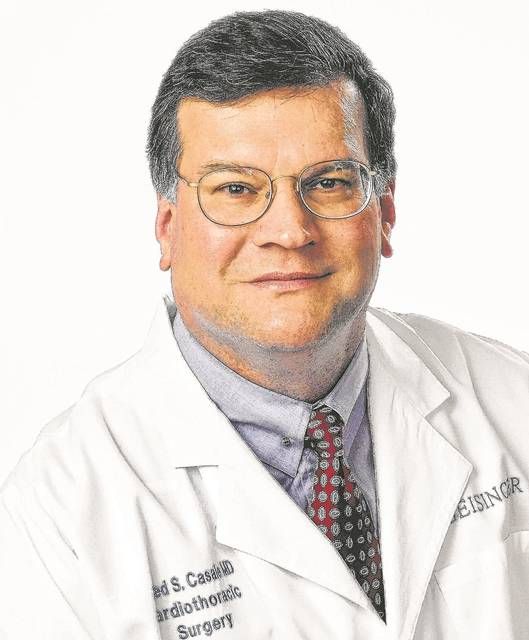Click here to subscribe today or Login.
Failure … what an awful word. Never good — power failure, failure to thrive, failure to launch, but particularly worrisome to your medical team is heart failure.
Heart failure is not a disease but a syndrome.
OK prepare yourself for a demonstration of my obsession with precise language. Strictly speaking a syndrome is a collection of coexisting complaints (symptoms), observable physical characteristics (signs) and specific results on a variety of lab and imaging studies (findings.) Symptoms, signs and findings together define a syndrome that can be associated with a variety of different diseases, each the result from a specific causative factor but usually all acting through common abnormal physiological processes. Got it? OK, I don’t blame you. Let’s use heart failure to explain.
Shortness of breath is one symptom of heart failure. A sign related to it is a wet, gurgling sound with breathing or cough. A finding associated to it could be an abnormally dense lung image on a chest x ray because of fluid filling the normally spongy lung tissue.
Another symptom is painful feet and legs from swelling (the sign) of the ankles, lower legs and area around the lower back. In olden days this was called dropsy, today we call it edema.
Both shortness of breath and edema are the result of excess fluid accumulation in places it should be scarce. Lungs normally have blood inside blood vessels and a bit of fluid outside of blood vessels in the surrounding supporting tissues — just like your legs have plenty of blood inside vessels and a little in the muscles, fat, skin and other soft tissues. Why does the extra fluid pool in the lungs and legs?
With heart failure, it’s because the heart has become inefficient in pumping blood forward through the circulation in the only right direction; that is from the body, through the veins, to the right side of the heart for the first push, then out of the heart to the lungs, then back from the lungs with newly collected oxygen, getting a second push from the left side of the heart and out to the body through the arteries to deliver food and oxygen to the organs and finally back into veins with waste from the organs to start the cycle again, and again, and again about 80 times every minute of your life. Pretty amazing, no?
But if the heart fails to pump effectively because its own blood supply is compromised by narrowed heart muscle-feeding arteries, or from muscle damage from a heart attack or from narrowed or leaky heart valves or from a virus infecting heart muscle cells or from abnormal heart rhythms and so many other causes … blood backs up … into the lungs and tissues and heart failure occurs.
Each of the diseases I listed in the last paragraph can be caused by a variety of specific agents. Take valve narrowing as an example. Scarlet fever caused by a strep germ infection can damage the aortic heart valve that then tries to repair the damage by letting calcium grow into the tissues with the unfortunate effect of thickening and stiffening the valve ultimately causing it to narrow. Other times the valve damage is the consequence of age-related thickening.
Let’s recap. Symptoms, signs and findings define syndromes. Syndromes are caused by abnormal physiology. The abnormal physiology results from a specific disease, which is usually the consequence of a particular causative factor. Pulling these all apart and sorting things out is the challenge of medical diagnosis; it’s why medical school and post-graduate training is long, arduous and rigorous.
Next week, treatment!








